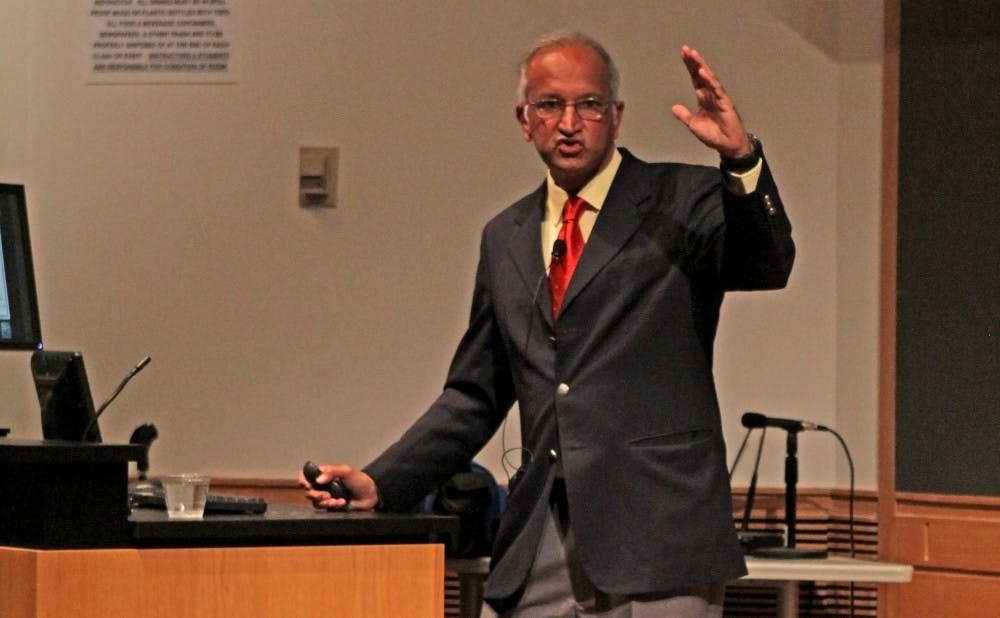Conservation scientist Ullas Karanth, an expert in Bengal tiger conservation, argued that the key to wildlife conservation lies in the cross-section of science and politics.
At his lecture Tuesday evening—entitled “Recovering Nature in Emerging India: The Tiger as a Case Study”—Karanth explained that his methods of conservation can be used as a model for other nations struggling with conversation. Despite predictions of their extinction by the year 2000, the Bengal tigers have survived, thereby representing the possibilities for successful conservation methods globally.
“Conservation is about being optimistic, but cautiously optimistic,” Karanth said.
In the past 30 years, 93 percent of the tiger habitat has been lost, Karanth said. He added that many people question if there is room for tigers in places like India where population densities are rapidly increasing.
Karanth said that, in fact, it was possible, and the changes have already begun.
Conservation methods are very political, Karanth said. In order for efforts to gain support and be successful, conservationists have to focus on marketing key, recognizable features of the habitat tigers live in.
“When I say tiger conversation, I mean all this,” Karanth said, referencing all of the animals that coexist in the tiger habitat.
Hunting and fires also pose large threats to the habitats in India.
“Tourism is potentially a very powerful tool to promote conservation,” Karanth said. “But dangerous if not properly managed.”
He added that, though conservation is bringing in large amounts of money to India, this monetary flow can increase corruption, so much of it does not go to help the habitats.
Despite these setbacks, Karanth said that the situation in India is improving and can serve as a model for other conservation efforts.
Because of the traditional polytheistic religion in India, many people feel passionately about preserving wildlife but lack an understanding as to how to make conservation a reality.
“The idea that you can have space for animals—that other creatures need space—is acceptable,” Karanth said.
But the efforts to promote conservation must be driven by science, Karanth said. He began studying tigers in 1986, but found it hard to put trackers on the animals.
“They are not as easy to catch as mice,” he said.
He found the solution to catching the tigers by using a mix of modern and traditional methods used by ancient Indian hunters. Through a lure and a trained elephant, Karanth was able to overcome the obstacle.
Over the next 20 years, Karanth observed the behaviors and problems that the tigers faced and saw them relatively overcome.
“The populations are sustaining, thriving and doing very well,” Karanth said.
William Chameides, dean of the Nicholas School of the Environment, noted the significance of this and similar projects on the conservation of wildlife.
“The study of the environment impacts more than just the environment,” Chameides said, noting that the health of the Earth impacts the emotional, physical and economic wellbeing of the world.
At the end of the lecture, Chameides presented Karanth with a painting of an ibis, which represent bravery because they are the last birds to leave before a hurricane.
“I truly believe that we can at sometime have over 50,000 tigers in India again,” Karanth said.
Get The Chronicle straight to your inbox
Signup for our weekly newsletter. Cancel at any time.

